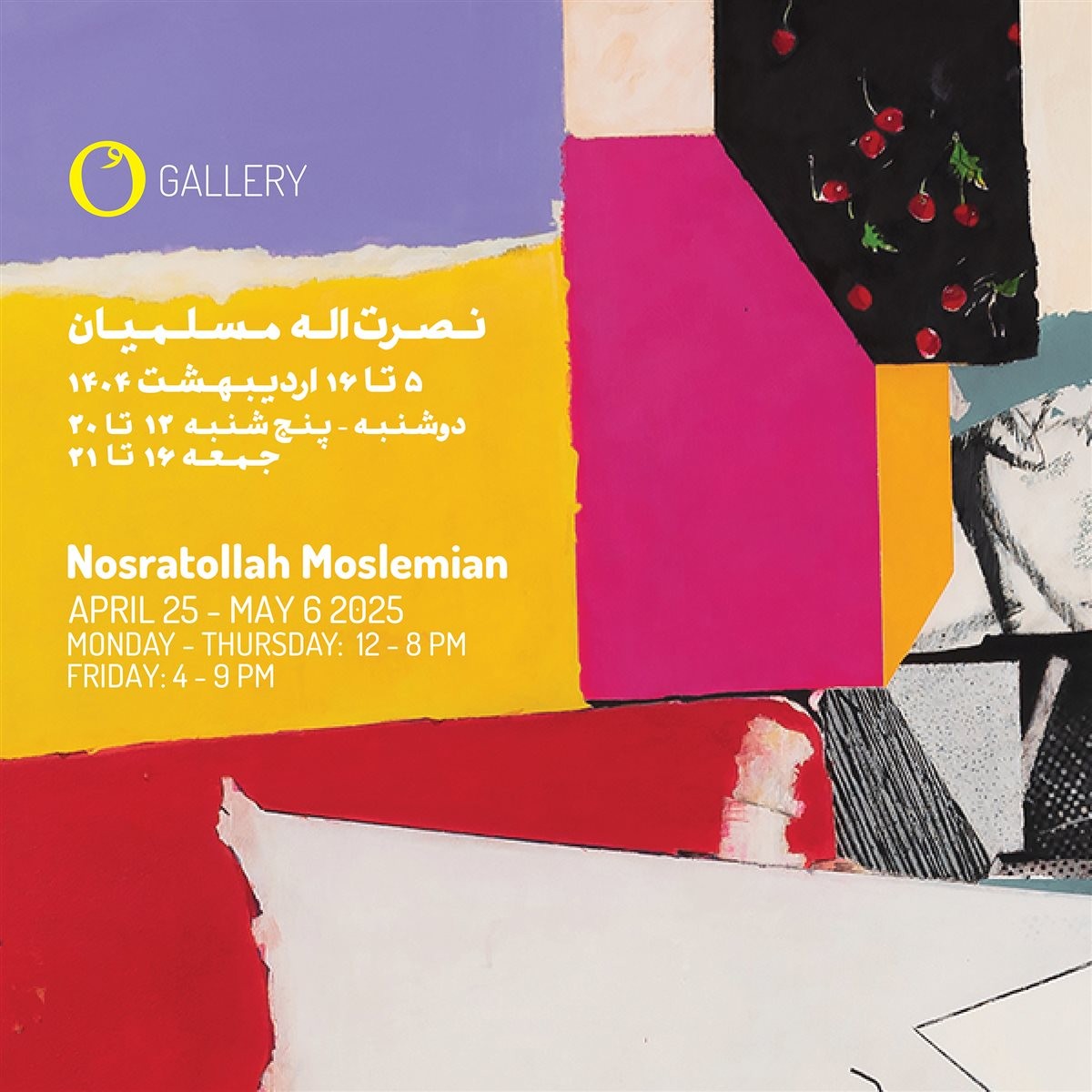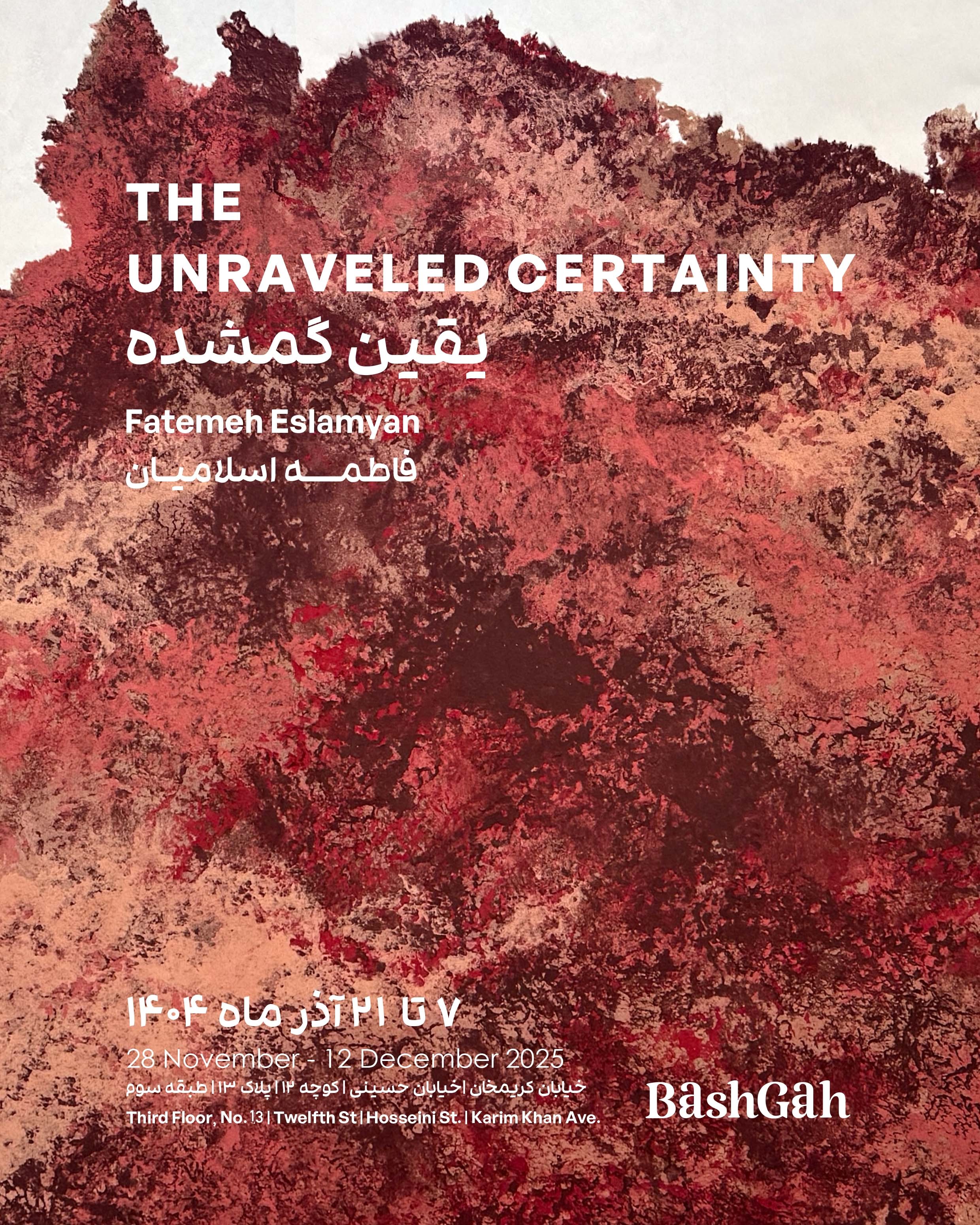Tehran,
No. 18 Shahin (Khedri) St., Sanaee St.
25 April 2025 - 6 May 2025
This series, developed since the 1990s, signifies a major departure from Moslemian’s earlier symbolic style—an approach he came to view as too removed from the complexities of lived experience. Moving away from large, sign-laden canvases, he turned toward a more introspective practice, drawing from personal history and the influence of concrete conditions and the experience of Modernism.
In these works, abstraction and figuration coexist without one overpowering the other, echoing Moslemian’s belief in the multiplicity of life’s forms. The figures he paints are not symbolic constructs but human presences—marked by what they have endured. Rather than portraying a defined persona, he renders faces that carry the weight of both personal and collective histories.
His visual language is marked by a striking paradox: comforting, luminous colors coexist with expressions of tragedy. This emotional dissonance draws viewers into a space of reflection and vulnerability, reaffirming his commitment to representing the human condition and our shared responsibilities in times of crisis.
The influence of Persian miniature is evident in his portraits of women. These works reveal his deep attentiveness to identity, cultural memory and the lingering imprint of history on the present. Yet he navigates this terrain with care, maintaining a delicate balance between admiration and critique, reflection and distance.
Moslemian’s compositions are rich with symbolic elements, yet these symbols resist fixed meanings. Rather than referencing familiar social signifiers, they remain intentionally vague and open-ended, suggesting personal or ambiguous associations. His use of collage-like forms and moments of realism deepens the layered emotional terrain of the work, leaving space for interpretation while inviting sustained contemplation.
In these works, abstraction and figuration coexist without one overpowering the other, echoing Moslemian’s belief in the multiplicity of life’s forms. The figures he paints are not symbolic constructs but human presences—marked by what they have endured. Rather than portraying a defined persona, he renders faces that carry the weight of both personal and collective histories.
His visual language is marked by a striking paradox: comforting, luminous colors coexist with expressions of tragedy. This emotional dissonance draws viewers into a space of reflection and vulnerability, reaffirming his commitment to representing the human condition and our shared responsibilities in times of crisis.
The influence of Persian miniature is evident in his portraits of women. These works reveal his deep attentiveness to identity, cultural memory and the lingering imprint of history on the present. Yet he navigates this terrain with care, maintaining a delicate balance between admiration and critique, reflection and distance.
Moslemian’s compositions are rich with symbolic elements, yet these symbols resist fixed meanings. Rather than referencing familiar social signifiers, they remain intentionally vague and open-ended, suggesting personal or ambiguous associations. His use of collage-like forms and moments of realism deepens the layered emotional terrain of the work, leaving space for interpretation while inviting sustained contemplation.

Artists
Available Nearby Exhibitions
The Unraveled Certainty
Tehran
28 November 2025 - 12 December 2025
